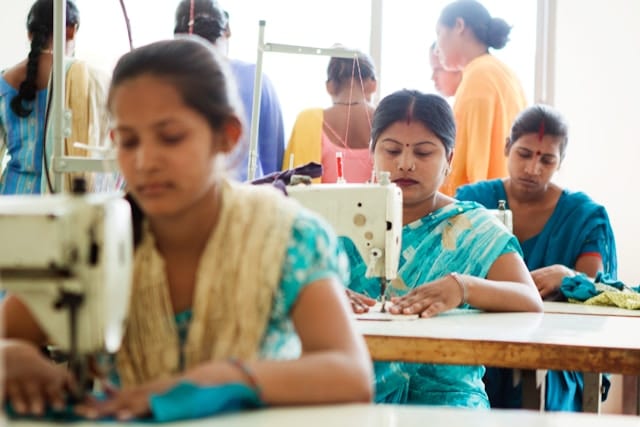What Innovations Are Driving the Adoption of Sustainable Practices in Textile Manufacturing?

The textile industry is one of the most significant contributors to the environmental crisis, with a significant effect on water, energy, and waste levels. As we contemplate a future where sustainability is no longer just a buzzword but a necessity, the textile industry must adapt, innovate, and transform its processes to become more environmentally friendly. This article delves into the innovations that are driving the adoption of sustainable practices in textile manufacturing.
The Pursuit of Sustainable Materials
Most of the textile industry’s environmental impact originates from the materials used in production. The use of synthetic fabrics like polyester, which is derived from petroleum, has a substantial ecological footprint. On the other hand, natural materials like cotton require huge amounts of water and pesticides to produce. Therefore, the search for sustainable materials is a critical aspect of reducing the industry’s environmental impact.
Sujet a lire : How Can Technology Assist in the Efficient Management of Urban Waste?
Innovations in this area have led to the development of eco-friendly textiles made from organic cotton, hemp, and other sustainable crops, which require less water and chemical inputs. These materials are not only less damaging to the environment but often have superior qualities such as durability and comfort.
Moreover, the technology for recycling textiles has also advanced significantly, reducing the demand for new materials. Companies are now able to recycle discarded clothing into new threads, reducing waste and conserving resources.
A voir aussi : Analytics and monitoring tools for chatbots
Energy-Efficient Production Processes
Energy usage is another major concern in the textile industry. Traditional processes are highly energy-intensive, contributing to global carbon emissions. However, recent technological advances have enabled a significant reduction in energy use.
One of the most promising innovations in this regard is waterless dyeing. Conventional dyeing methods require large quantities of water and release harmful chemicals into the environment. In contrast, waterless dyeing technologies use supercritical carbon dioxide to infuse fabrics with color. This process reduces energy consumption and water use, as well as eliminates wastewater.
Another significant innovation is the use of renewable energy sources in textile production. More and more factories are switching to solar, wind, and other renewable energy sources, reducing their carbon footprint.
Reducing and Recycling Waste
The textile industry generates a significant amount of waste, both in the form of discarded materials and unsold products. However, companies are increasingly adopting innovative strategies to reduce and recycle this waste.
One such strategy is the concept of a circular economy, where waste is minimized by reusing and recycling materials. Many companies are now designing products to be fully recyclable, ensuring that every part of the product can be reused.
In addition, technology is playing a crucial role in reducing waste. For example, 3D printing and digital manufacturing technologies enable precise production, reducing the amount of material waste. Moreover, artificial intelligence can help predict demand, reducing the amount of unsold stock.
Environmentally Friendly Packaging
Packaging is another area where the textile industry can make significant improvements in sustainability. Traditional packaging materials, such as plastic bags and boxes, are not only harmful to the environment but also contribute to the waste problem.
Fortunately, there are now many eco-friendly alternatives available. For instance, many companies are now using biodegradable packaging materials made from plants. Not only do these materials decompose naturally, but they also require less energy to produce.
Another innovation is the use of reusable packaging. This strategy not only reduces waste but also creates a better experience for the customer.
The Role of Digital Technology
Digital technology is playing a pivotal role in driving the adoption of sustainable practices in the textile industry. Through data analysis and machine learning, companies can optimize their operations, reducing waste and energy use.
For example, companies can use data analysis to track their supply chain, identifying areas where they can improve sustainability. Meanwhile, machine learning can help optimize production processes, reducing waste and energy use.
Moreover, digital technology can help promote transparency and accountability in the textile industry. Through blockchain technology, companies can track and verify the sustainability of their materials and processes, giving customers confidence in their products.
Overall, the future of the textile industry lies in the adoption of sustainable practices. Through innovation and technology, the industry can reduce its environmental impact, creating a brighter future for all.
Revolutionizing the Supply Chain
The supply chain represents a significant opportunity for the improvement of sustainable practices within the textile industry. Traditional supply chains often involve multiple stages of production located in various parts of the world, leading to high transportation costs and considerable carbon emissions.
Sustainable supply chain management aims to minimize these issues by streamlining processes, reducing waste, and emphasizing local sourcing and production. Locally sourced materials not only reduce transportation emissions but also often have a smaller environmental footprint due to stricter environmental regulations in certain regions.
Digital technology plays an instrumental role in revolutionizing the supply chain. Supply chain mapping software allows companies to visualize their entire supply chain, identify bottlenecks, and find opportunities for improvement. These tools can help businesses make informed decisions about where to source materials, how to transport them, and how to coordinate production most efficiently.
Another innovation in sustainable supply chain management is the use of blockchain technology. Blockchain allows for greater transparency and traceability, letting companies, and consumers alike, track the journey of a product from its origin to the store. This can serve to authenticate the sustainability claims of fashion brands and reassure consumers about their purchases.
Furthermore, companies are exploring new business models to improve the sustainability of their supply chains. For instance, the sharing economy model, which promotes the use of shared resources, is gaining traction in the fashion industry. Fashion brands are now offering rental or subscription services, reducing the need for constant production of new items and hence, minimizing the environmental impact.
Emphasizing Cleaner Production Methods
Turning to cleaner production methods is yet another innovation driving sustainable practices in the textile industry. Cleaner production involves improving operational efficiency and minimizing waste, energy consumption, and emissions throughout the production process.
One of these methods is the use of biotechnology in textile production. For instance, enzymes are increasingly used in the pre-treatment, dyeing, and finishing stages of textile manufacturing. Enzymes, being biodegradable and non-toxic, offer a more sustainable alternative to chemical processes that can be harmful to the environment.
Energy-efficient equipment is also crucial for cleaner production. Modern machinery often comes with energy-saving features, such as automated shutdown during idle periods and optimization of energy use during operation. Moreover, factories that adopt renewable energy sources further lower their carbon footprint.
Transitioning to cleaner production methods often involves a significant upfront investment. However, many companies find that the benefits, including cost savings from reduced energy consumption and waste, improvements in product quality, and enhanced brand reputation, outweigh the costs in the long run.
Conclusion
The textile industry is at a crucial turning point. With the environmental crisis looming large, sustainable practices are no longer optional but necessary. Innovations in materials, technology, supply chain management, and cleaner production methods are paving the way for a more sustainable textile industry.
The journey towards sustainability is not without its challenges. It requires commitment, investment, and a willingness to challenge traditional business models and practices. However, with increasing consumer demand for sustainable fashion, regulatory pressures, and the undeniable evidence of environmental impact, the industry cannot afford to delay this transition.
Progress is already visible, with increasing numbers of fashion brands committing to sustainable practices. As technology continues to evolve, it will undoubtedly unlock further possibilities for reducing the environmental impact of the textile industry.
In the end, the move towards a more sustainable textile industry is not just about preserving the environment. It’s about creating a resilient, responsible, and ethical industry that values people and the planet as much as profits. Sustainable practices, thus, are not just the future of the textile industry, they are its only future.
